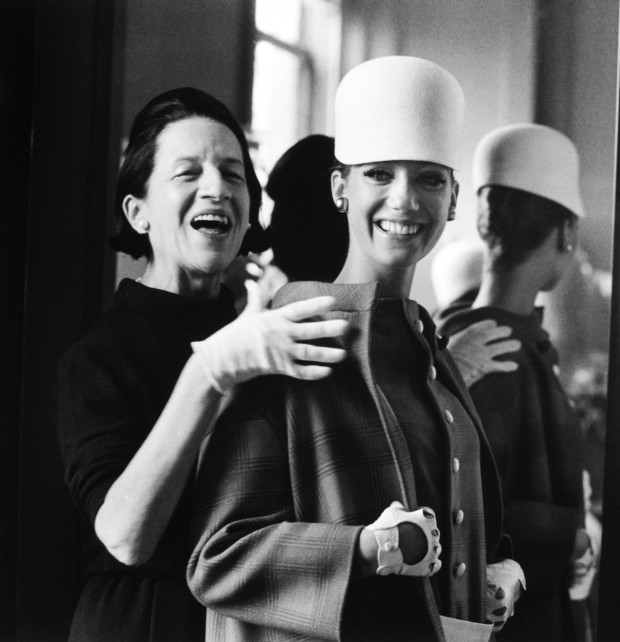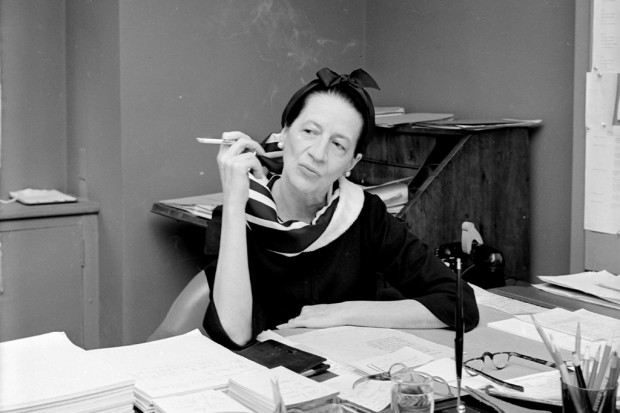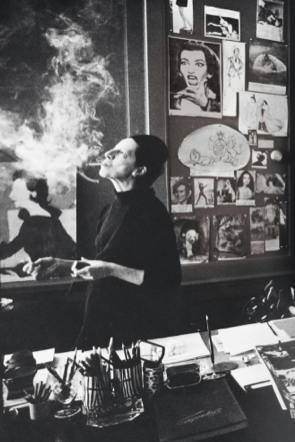A documentary on a single subject can live or die by how fascinating the person or item in focus is. Luckily for Diana Vreeland: The Eye Has To Travel, the person in the center is rambunctious and spirited to a degree that captures your attention like few others on screen. Diana Vreeland made a lasting impression on the fashion industry while being a fashion editor at Harper’s Bazaar and eventually editor-in-chief of Vogue. Those aren’t just my sentiments, but instead echoed by some of the top people alive in the industry today. The documentary spans her entire life and even for people outside the fashion industry it is a worthwhile watch that will leave you fascinated with a woman you likely never knew a thing about.
 Born in 1903, Vreeland had a rough childhood as her mother was verbally cruel, calling her an ugly swan and she had little support from her father who “was very British,” as he disliked the outward show of emotion. She grew up in Europe, mostly in Paris, which gave her a love of style and beauty. As quickly as she could, she moved out and set off to New York as a dancer. This is when she was noticed by the editor of Harper’s Bazaar for her style and given a job. Having, in her own words, “never gotten dressed before noon,” she had little idea of what a real job entailed but quickly found herself immersed.
Born in 1903, Vreeland had a rough childhood as her mother was verbally cruel, calling her an ugly swan and she had little support from her father who “was very British,” as he disliked the outward show of emotion. She grew up in Europe, mostly in Paris, which gave her a love of style and beauty. As quickly as she could, she moved out and set off to New York as a dancer. This is when she was noticed by the editor of Harper’s Bazaar for her style and given a job. Having, in her own words, “never gotten dressed before noon,” she had little idea of what a real job entailed but quickly found herself immersed.
She quickly rose within the ranks at Harper’s Bazaar and became the chief fashion editor, overseeing some of the most influential periods of the magazine, turning it into a juggernaut in the industry. With a slew of interview footage, voice recordings for an autobiography, and personal footage and photos, we get to know Vreeland as a barely-there mother, a wife, and an icon in the fashion industry that was a tireless worker. One interviewee mentions that while she was never overtly beautiful or rich, as she created beauty and made others wealthy.
Outlandish and outspoken is the most succinct description of Vreeland, but this documentary also reveals a hilarious women. She was extremely difficult to work with, and there are criticisms galore within the film. Yet, there seems to be even more praise from the same people that criticize her because she was easily seen for the genius she was when it came to fashion, staging, and how to push the envelope without breaking the seal. Vreeland discovered a slew of iconic models and while at Vogue, she loved to showcase a model’s odd nose, freckles, a long neck, or any other thing that might ordinarily be deemed as an imperfection and hidden away. She believed that beauty lay with how you carry yourself and the confidence that it brought.

While at Vogue she brought the magazine to the forefront, not just in terms of fashion, but in terms of lifestyle as well. She created a slice of the “youthquake” movement that was created in the 60s and she rode it into the 70s as well. Life was grand and style was supreme, and Vreeland was at the top of the mountain. Credit has to be given to co-directors Bent-Jorgen Perlmutt, Frédéric Tcheng, and Lisa Immordino Vreeland, who show the colossal tale and impact of Vreeland’s life within 86 minutes without seemingly missing a beat.
From the outside, she is known for popularizing the scant bikini and pushing it to the front of society. She is also credited with bringing the blue jeans into the eyes of the fashion world which sparked a plethora of designs and styles that live on today. Perhaps that is truly part of her trailblazer aura: she gave people the courage to take something published in her magazines and run with it. Diana loved to tell stories, even if they had elements of fiction within them. If you tell a story, she says, it better be interesting. Why tell a boring story, even if it’s true? Luckily, the story of her life captured in this documentary is riveting.

